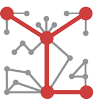So, how will Internet of Things change brand and consumer interaction? It might be too early to predict! But, in this video, our CEO, Jasmeet Sawhney, talks about some areas that are emerging that give us some insight into how it might impact brand and consumer interaction. Full transcript below.
VIDEO TRANSCRIPT:
So, how will Internet of Things change brand and consumer interaction? Now, I think that’s a fairly broad question because Internet of Things would likely change the way we think about products, and how we market them. But, if someone wants to tell you that they know all the different ways it will impact brand and consumer interaction – I don’t think that’s possible because there’ll be so many dynamics at play of which we have very little understanding, and until the ecosystem evolves, we would not know. But, there are some broad areas that are emerging that give us some sense into what might be coming, and how it might impact brand and consumer interaction. I am going to talk about those areas today.
First, and I think this is going to be the most important, and probably the number one priority for marketers is Direct Access to the Consumer. Now, Direct Access provides huge opportunities because it enables highly contextual communication with the consumer, which has much higher conversion rates than anything else we know of today. But, what is Direct Access, what’s an example of that? Let’s say I have a smart printer at home, and the manufacturer of that printer can ship a cartridge directly to my home just by sensing that I am running low on ink. Now, they could do that because they have direct access to the printer sitting at my home. If you think about that for a moment – a powerful shift would take place.
Brands can finally know ‘why’ someone buys what they buy. We already know what they buy, when, where, and how, but the most important insight – the reason behind the purchase – the why behind the purchase – we had very little or no upfront visibility into it. And, when we know that, we can proactively add value and convenience to the products and services that we deliver. So, if my car’s tire tread is running low, let’s say it’s at 20%, my dealer can send me service reminders or discounts to get it replaced in time. That’s the added value and convenience that can be offered if you have access to customer data. But, what happens when you have access to customer data?
The expectation of the customer goes through the roof! Because they are giving you that data in exchange for the exceptional experience. So, on one hand, it’s a huge opportunity because brands can now learn about customer preferences and behaviors, and deliver highly personalized experiences. On the other, it’s a big risk! Because brands that fail to deliver on the promise of the exceptional experience, would fail. Let’s say I want to give a gift to my wife, and a brand offers me an option to add a highly personalized video message to that gift. I would pick that brand any day over a competitor because it provides highly personalized experience, which is new and surprising in many ways. Those are the experiences that brands would have to deliver if they have to succeed in IOT age.
But, how would these experiences be delivered? They’ll be delivered through Digital Layer of Services that’ll sit on top of these smart products, and they will constantly learn and adapt to consumer preferences. Now, these digital layer of services bring in new opportunities. For one, they bring in new revenue for the brand. But, that’s not even the biggest opportunity. The biggest opportunity is in Customer Loyalty because these smart products are much harder to switch, and they can also command a premium price. So, if I have a smart car and it connects seamlessly with my garage door, with my home security system, with my other appliances, while it can also diagnose and fix its own issues. It’s very hard to switch that smart car with another car. Those are some of the things that Tesla already offers, that’s probably one of the reasons it has such loyal customer base.
Finally, it all comes together in the form of relationships – deep, strong human to human relationships that are going to be enabled by the IOT ecosystem. The kind of ones we don’t even know of today. For example, if you buy a smart product, let’s say a customer buys a smart product, a thermostat. Brings it home, tries to install it, is having difficulty installing it, keeps on pressing a button. This might be the right time for the customer service rep to jump in and offer help, and build that strong relationship. It doesn’t stop there. If multiple customers are having that same experience, or that same issue, it’s a great feedback for the product team to improve the product, or to improve the installation process. So, now, customer is part of the product journey.
So, those are just some of the ways, I think Internet of Things would impact brand and consumer interaction. I am pretty sure there are many more, and I think we would learn a lot as the ecosystem evolves, but I would love to hear your comments on how Internet of Things would change Brand and Consumer interaction. Thanks for watching!


